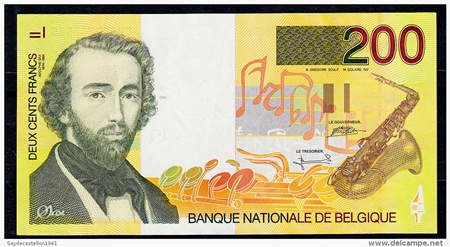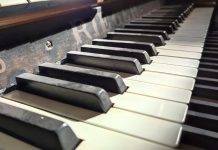
The River Meuse begins its long journey in France and flows through Belgium and the Netherlands before reaching the North Sea. On the left bank, not far from the French border is the Belgian town of Dinant, dominated by the imposing Collegiate Church of Notre Dame. The town is famous both for its flamiche, which is a local version of quiche and for the Couque de Dinant, claimed to be Europe’s hardest biscuit, which on reflection seems a curious claim to make.
Dinant is perhaps more famous as the birth-place of Antoine-Joseph “Adolphe” Sax who was born in 1814 and whose father, Charles-Joseph was a designer of musical instruments. Following in his father’s musical footsteps, the young Adolphe began to design his own instruments while still a child.
At the age of twenty-four, Adolphe moved to Paris and set to work improving the valved bugle, a standard instrument in French military bands. His instruments were so successful that they became known as saxhorns and were produced in at least seven different sizes. They became the most common brass instrument in bands during the American Civil War.
Sax invented many instruments including short-lived novelties like the saxotromba and the saxtuba, but for most people his name is inexorably linked with the saxophone. Although the saxophone tends to be associated with jazz, it was actually invented many years before jazz emerged. Strangely enough, the first of the family that Sax built – around 1841 – was an elephantine bass saxophone, which evidently impressed Hector Berlioz. The composer was amazed at its versatility, unique tone and presumably its enormous dimensions.
Adolphe Sax was convinced that saxophones of various sizes could enhance the sound of the military band, and within a few years he’d designed an entire saxophone family of fourteen instruments. Most of them have become obsolete and only four of the original fourteen remain in regular use today, the soprano, alto, tenor and baritone. The bass sax is very rarely heard in classical music.
The saxophone was originally designed to have a smooth and mellifluous sound and this is the preferred tone quality for classical saxophonists, far removed from the raucous sound produced by most jazz and rock players in more recent years. The characteristic tone quality inspired many composers to write concertos for the instrument – especially the alto sax – among them Debussy, Ibert, Milhaud, Hindemith, Villa-Lobos, Paul Creston and Philip Glass.
Glazunov was born in St. Petersburg and was the son of a wealthy publisher. He began studying piano at the age of nine and started composing soon afterwards. In later years, he studied with Rimsky-Korsakov and went on to enjoy international fame. He was a prolific composer who completed nine symphonies and several concertos together with a vast array of orchestral works. The lyrical and rather melancholy saxophone concerto dates from 1934, towards the end of his life. It was in fact, his last composition. The music is deeply rooted in Romanticism and it’s become part of the standard saxophone repertoire.
In the world of classical music, Marcel Mule (1901-2001) is universally recognized as the greatest master of the instrument. He was described in one newspaper review as “the Jascha Heifetz of the saxophone”. In 1927, he formed the Marcel Mule Saxophone Quartet which was more of a challenge than it sounds, because at the time no music existed for such an ensemble. Undaunted, Mule began the task of writing arrangements himself and also encouraged many composers to write works for the instrument or the quartet. One of them was Gabriel Pierné, well-known in Paris as an organist and conductor. It was he, who in 1910 conducted the world premiere of Igor Stravinsky’s ballet The Firebird.
Pierné wrote the Introduction and Variations in 1934 and dedicated the work to the Marcel Mule Quartet. The music is elegant, charming and somehow very French and these young musicians give an excellent and expressive performance. Notice how the low notes of the baritone saxophone add a sumptuous richness to the musical texture.
Of course as well as the saxophone, Belgium also gave the world French fries, although I suppose most Belgians are probably fed up being reminded about it. But we also have to thank Belgium for the contraceptive pill, the Mercator projection, the praline, the jpg conversion, and strangely enough, roller skates – which date from the middle of the nineteenth century. It is pleasing to think that perhaps the young Adolphe might have used a pair of them to hurtle around the streets of Dinant.
 |
 |
 |





